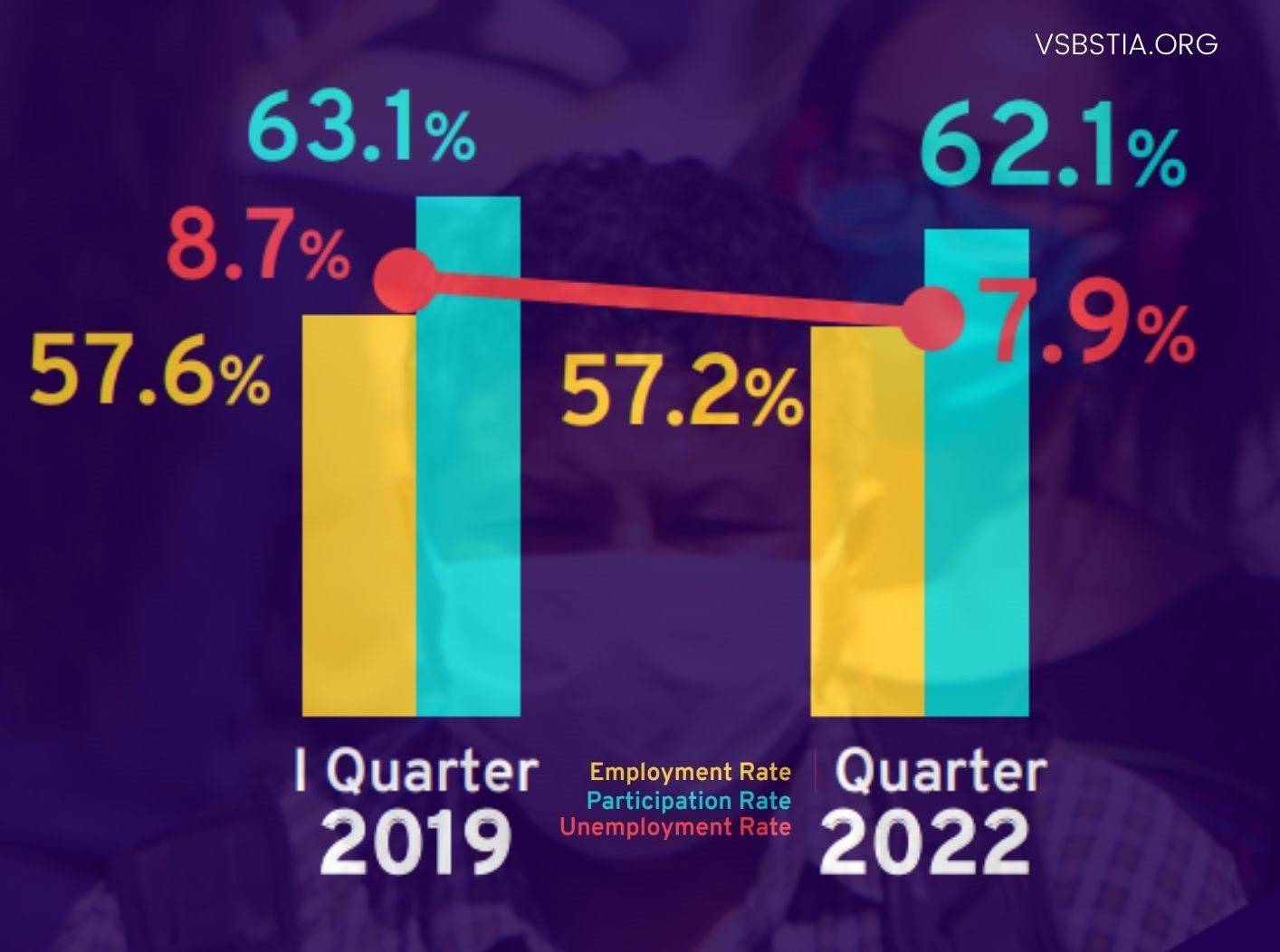In a context of partial recovery of labour indicators, the Russian aggression against Ukraine has made the outlook for labour markets in the region more complex. Slowdown in economic growth makes full employment recovery more difficult and increases the risk of informalisation, while accelerating inflation negatively impacts real labour and household incomes. This adds to the enduring distributional effects of the pandemic in a region characterised by very high levels of inequality.
Summary
- Thanks to a combination of health strategies and economic measures implemented to support businesses, workers and families, the global economy overcame the economic impacts of the COVID-19 pandemic throughout 2021.
- Latin America and the Caribbean was one of the fastest growing regions in 2021 (6.9 per cent) after being the hardest hit by the impact of the pandemic in 2020 (-7.0 per cent).
- Despite this, Latin America’s GDP per capita accumulated an average fall of 2.6 per cent in the 2020-21 biennium. 12 of the 20 Latin American economies ended 2021 with a lower GDP per capita than that in 2019. In the Caribbean, excluding Guyana, GDP per capita accumulated a decline of 9.8 per cent.
- By the end of 2021, a significant slowdown in economic growth rate was projected for the region, as for the rest of the world. The gradual withdrawal of fiscal and monetary stimuli in a context of rising inflation and a more complex international financial scenario, already led to a decline in the growth rate and a return to the low levels recorded in the five-year period prior to the COVID-19 (2014-2019).
- This scenario was compounded in February 2022 by Russia’s aggression against Ukraine, thus exacerbating global economic problems. In the region, this has had direct negative impacts derived from the increase in international energy and food prices, and indirect impacts related to the general deterioration of the world economy.
- The severity of the situation has led to revise growth forecasts downward, while inflation has accelerated. According to the International Monetary Fund’s July 2022 estimates, growth in Latin America and the Caribbean will be 3 per cent in 2022, a significant reduction from growth in 2021. Likewise, according to the most recent ECLAC forecasts for August of 2022, regional growth will be 2.7 per cent.
- Macroeconomic dynamics have been impacting employment and income generation. In the first quarter of 2022, the region showed a slight quarter-on-quarter reduction in the employment rate (-0.6 percentage points) and in the economic participation rate (-0.5 percentage points), while the fall in the unemployment rate came to a halt.
- The regional employment rate in the first quarter of 2022 was 57.2 per cent, the economic participation rate was 62.1 per cent and the unemployment rate was 7.9 per cent.
- A comparison of the labour indicators for the first quarter of 2022 with those of the first quarter of 2019 shows that the regional employment rate has not yet fully recovered to the values recorded three years ago, although the difference is small. Nor has it returned to the average economic participation rate of that time. Since the lag in the recovery of participation is greater than that of employment, the regional unemployment rate fell (from 8.7 to 7.9 per cent) between the two points in time.
- It is also important to note that behind the regional average at the national level, indicators reflect significant lags. In 10 out of 14 countries, the employment rate in the first quarter of 2022 had not yet recovered to the values it had in the same period of 2019. In half of them, the gap was around 5 per cent or higher. At the same time, most of them show some signs of slowdown in both labour force participation and employment.
- In addition to an average duration of unemployment rate of 8 per cent, the average duration of unemployment episodes has increased sharply as a result of the crisis. Moreover, this increase was confirmed even during 2021, when the unemployment rate experienced a downward trend
- After the sharp informal employment contraction during the most critical phase of the pandemic, the overall recovery in jobs has been driven by the growth of informal occupations. However, as formal employment recovered, the contribution of informal jobs declined.
- In countries that have recovered to pre-pandemic employment rate, or are very close to it, the informality rate is no higher than that in 2019, despite the increasing path observed after the abrupt contraction of this indicator in the second quarter of 2020.
- However, countries that still exhibit significant differences with respect to the recorded volume of occupations in 2019 could experience a closing of this gap with higher informality rates than those observed in 2019. Moreover, in some countries in the region, formal employment showed low dynamism or even contractions during the first half of 2022.
- The regional informality rate in the fourth quarter of 2021 was almost 50 per cent, close to the 2019 record. In other words, almost one in two workers in the region is informal.
- At the regional level, the recovery of women employment has been stronger than that of men employment. However, less educated women have not only been the group hardest hit by the pandemic but also the group that has lagged furthest behind in the employment recovery phase.
- The regional employment rate for young people in the first quarter of 2022 was 41 per cent, almost 21 percentage points lower than for adults (61.7 per cent).
- Although the average youth unemployment rate was declining after peaking at 24 per cent in mid-2020, it was still very high at 17.6 per cent in the first quarter of 2022. But even some countries in the region exhibit significantly higher rates than this, reaching values of 24 / 34 per cent.
- Meanwhile, the informality rate among young people was 63 per cent in the fourth quarter of 2021, significantly higher than the 47.6 per cent recorded among adults.
Download Document_Labour Overview Series Latin America and the Caribbean 2022 (Source: ILO)



